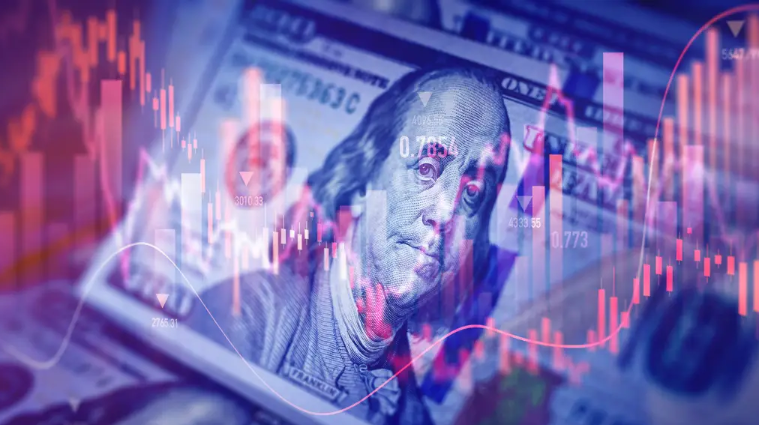Short-Term Trends of the Dollar
Advertisements
The trajectory of the US dollar often resembles a rollercoaster ride, captivating investors as it fluctuates in tandem with broader economic sentiments and political dynamics. Recently, after a brief retreat, the dollar saw a significant surge driven by the US government's newly imposed tariffs on steel and aluminum products. This policy shift sent ripples through global markets, prompting a wave of concerns regarding trade tensions and their potential ramifications on the economy. As a result, many investors are now adopting a wait-and-see approach, monitoring how this situation unfolds and impacts market sentiment.
The announcement of a 25% tariff on certain imports was akin to a seismic event in the financial landscape, reverberating across continents and drawing immediate rebuke from various nations including members of the European Union, Mexico, and Canada. European Commission President Ursula von der Leyen swiftly responded by indicating that the EU would enact countermeasures, amplifying the existing tensions that characterize the US's trade relations with its partners. Such protective measures heighten the stakes in international commerce and reflect a broader trend where countries are increasingly resorting to tariffs as a means of shielding their domestic markets.
Within the Asian markets, a mixed reaction emerged following the tariff announcements. The dollar exhibited strength against the Japanese yen, briefly eclipsing the 153 mark—an indicator of robust demand. However, against the euro and the British pound, it faced some downward pressure, with the euro trading at approximately 1.0360 and the pound at 1.2455. Interestingly, other currencies like the Australian dollar seized the moment to appreciate, registering a 0.2% increase as it traded around 0.6306 USD. This divergence in currency performance illustrates the complexities present in global currency markets where geopolitical factors can pivot the balance of strength between currencies.

The underlying strength of the dollar amid tariffs projects a dual narrative. Some investors hypothesize that these tariffs may reshape global trade dynamics, potentially affording the US a competitive edge. This belief, while attractive, must be juxtaposed with the considerations surrounding inflation. The imposition of tariffs is typically associated with raising the costs of imported goods, which can subsequently drive prices higher domestically. Such inflationary pressures create a challenging environment not just for consumers but also for policymakers at the Federal Reserve, who must navigate these dynamics carefully.
Insights from market analysts reveal that the current bullish positioning of the dollar leads to considerations of the potential for overextension. This can be likened to an individual burdened with an overly heavy backpack, finding it challenging to maintain a fast pace. Federal Reserve Chairman Jerome Powell's recent statements have reinforced this cautious sentiment. By indicating that the central bank will not rush into rate cuts, Powell has cultivated a climate of apprehension among investors keenly aware of how Federal Reserve policy influences the dollar. Consequently, there is increasing anticipation regarding the upcoming core Consumer Price Index (CPI) data for January, as many are keen on gauging inflationary trends that could impact future monetary policy decisions.
Various market pundits anticipate a 0.3% month-on-month increase in the January core CPI, marking its fifth occurrence at this level over the past six months. Strategist Imre Speizer has stated, “Should inflation data exceed expectations, the market might defer the rate cuts projected by the Federal Reserve, potentially pushing it back to next year.” This sentiment resonates with many investors, reflecting a collective anxiety regarding inflation and the timing of potential rate adjustments by the Federal Reserve. If inflation does surpass forecasts, the central bank may find itself compelled to maintain current rates or even raise them, adding another layer of complexity to dollar dynamics in the months ahead.
Moreover, the broader implications of US trade policy extend beyond its borders, creating ripples across currencies in Mexico, Canada, and various emerging markets. The Canadian dollar has shown resilience, trading near its yearly high at approximately 1.4290 against the US dollar. Conversely, currencies like the Mexican peso and other emerging market currencies have remained under pressure owing to the ongoing uncertainties surrounding trade policies. For example, the Vietnamese dong faced historical lows this week, primarily due to trepidation over escalating trade surpluses with the US and growing trade flows with other Asian nations that could provoke further tariff measures from the US.
As the landscape continues to evolve, the outlook for the dollar in the short term hinges significantly on the forthcoming CPI data and the continued evolution of US trade policies. Investors worldwide are holding their breath, ready to recalibrate their expectations based on the shifts in market dynamics triggered by these developments. In this intricate theater of currency exchange, the dollar's fluctuations are intricately tied not just to domestic policies but are also susceptible to the influences of transnational trade policies. If inflationary pressures remain pronounced, the Federal Reserve could be forced to reconsider its stance on rate cuts, thereby providing the dollar with additional support.
In conclusion, the current interplay between tariffs, inflation, and central bank policy paints a vivid picture of the complexities underpinning the value of the US dollar. As investors navigate this multifaceted landscape, their decisions will be shaped by an array of factors that underscore the tension between domestic economic priorities and international trade relations.
Leave Your Comment